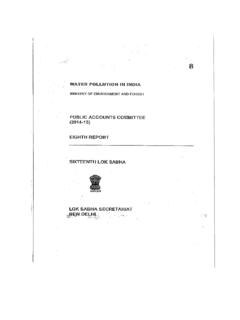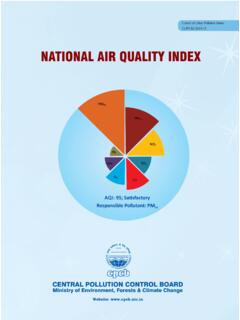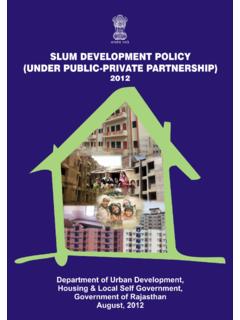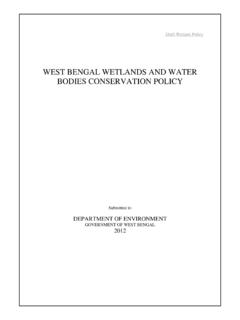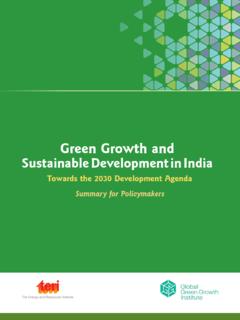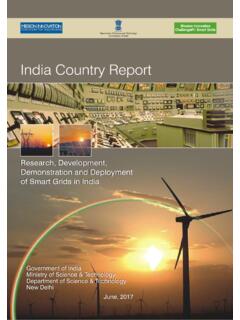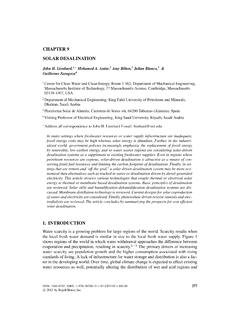Transcription of Solar Radiation Hand Book (2008) - India Environment Portal
1 Typical Climatic Data for Selected Radiation Stations (The Data Period Covered : 1986-2000) Solar Radiation Hand book ( 2008 ) A joint Project of Solar Energy Centre, MNRE Indian Metrological Department Contents Sl..No Subject Page No. 1. Basic of Solar Radiation 3 2. Solar Radiation Budget 4 3. The Sun - Main Features 5 4. The Solar Spectrum 6-7 5. Radiation Measurements 8-9 6. Radiation Network :Indian Meteorological Department 10 7. Radiation Terminology 11 7.
2 Index of Station-wise Mean Hourly Air Temperature and Mean Sunshine Hours 12 8. Monthly Global Solar Radiant of 13 Selected Radiation Stations 9. Monthly Global Radiation map of India 14-26 10. Mean Monthly Diffuse Solar Radiant of 27 Selected Radiation Stations 11. Monthly Diffuse Radiation map of India 28-40 12. Mean Hourly Air Temperature 41-80 13. Mean sunshine hours 41-80 Basics of Solar Radiation Solar Radiation is the radiant energy emitted by the Sun in the form of electromagnetic waves. The sun emits vast amount of radiant energy. The earth intercepts only a fraction of it. It is essential to drive directly or indirectly all biological and physical processes on the Earth.
3 The earth is the only planet in the Solar system, which receives an optimum amount of Solar Radiation that makes life sustainable on it. Solar spectrum resembles to that of a black body at approximately 5800K. 98% of the total emitted energy lies in the spectrum ranges from 250nm to 3000nm. About half of the Radiation is in the visible short-wave part of the electromagnetic spectrum. The other half is mostly in the near-infrared part, with some in the ultraviolet part of the spectrum Solar Radiation having wavelength less than (called ultraviolet) is absorbed by ozone layer in stratosphere. The ultraviolet Radiation not absorbed by the atmosphere is responsible for the change of color in skin pigments. The Solar Radiation , that traverse the atmosphere further, is subjected to scattering, reflection and absorption by air molecules, aerosols and clouds.
4 The Radiation budget represents the balance between incoming energy from the Sun and outgoing thermal (longwave) and reflected (shortwave) energy from the Earth. Globally, the budget is balanced. Otherwise the temperature would rise constantly. Locally, the budget is not balanced. Tropical areas get more than they release, while higher latitudes of the winter hemisphere release more than they receive. Solar Radiation Budget The Radiation from the Sun travels in the space as electromagnetic wave. Above the earth s atmosphere, sunlight carries 1367 watts of power per square meter. This is known as Solar constant. We define Solar constant as the amount of Solar Radiation received outside the earth s atmosphere on a unit area perpendicular to the rays of the sun, at the mean distance of the earth from the sun. The Earth receives x 1017 W of incoming Solar Radiation continouosly at top of its atmosphere.
5 But only half of it reaches the earths surface. Factors like absorption, scattering and reflection of light during its passage through the atmosphere are responsible for reduction of the amount of Solar Radiation available on the earth s surface ( ). Solar energy is, by nature, a low-density energy source. The Sun - Main features Radiant energy output Radius of the Sun Mean sun earth distance Radius of the Earth Energy intercepted by Earth Solar constant : x 1026 W : x 108 m : x 106 Km : x 106 m : x 1017 W : 1367 Wm-2 The Solar constantis the amount of incoming Solar radper unit area, measured o the outer surface of Eartatmosphere, in a plane perpendicular to the rays The Solar Spectrum When Solar Radiation is passed through a prism, it gets split into several colours.
6 This is the visible portion of the Solar Radiation . In fact, the Radiation from the sun extends into the ultraviolet and infrared spectral regions as well ( ). Solar spectrum resembles to that of a black body at approximately 5800K. 98% of the total emitted energy lies in the spectrum ranges from 250nm to 3000nm. About half of the radiant energy is in the visible short-wave part of the electromagnetic spectrum. The other half is mostly in the near-infrared part, with some in the ultraviolet part of the spectrum. Solar Radiation having wavelength less than (called ultraviolet) is absorbed by ozone layer in stratosphere. The ultraviolet Radiation not absorbed by the atmosphere is responsible for the change of color in skin pigments. The Solar Radiation that traverses the atmosphere further, is subjected to scattering, reflection and absorption by air molecules, aerosols and clouds.
7 Individual particles of light are called photons. An individual photon is considered to possess single wavelength depending on its energy content. The range of wavelengths in the Solar spectrum is directly due to collection of photons of many different energies. The distribution of photons in a wide energy spectrum has a deciding role in the performance of many Solar energy utilization devices. The Solar spectrum . Radiation Measurements Parameter Instruments used Short Wave ( - ) Direct Solar irradiance ngstr m and Thermoelectric Pyrheliometers Global Solar irradiance Thermoelectric Pyranometer Diffuse Solar irradiance Thermoelectric Pyranometer with shading ring Reflected Solar irradiance Inverted Pyranometer Solar spectral irradiance and turbidity Sunphotometer Long Wave (4 - 100 ) Net Terrestrial Radiation ngstr m Pyrgeometer Total ( - 100 ) Upward or downward Radiation Pyradiometer Net Radiation Net Pyradiometer ngstr m Pyrheliometer Thermoelectric Pyrheliometer on Tracker Pyranometer ngstr m Pyrgeometer Net Pyrradiometer Radiometer SondeRadiation Network: India Meteorological Department Radiation TERMINOLOGY 1.
8 Irradiance (Wm 2): Amount of radiant energy incident on a surface per unit area per unit time. 2. Direct Solar irradiance: Solar irradiance on a surface held perpendicular to sun rays and diffuse sky Radiation obstructed. 3. Global Solar irradiance: Solar irradiance on a horizontal surface due to both direct sun rays and diffuse sky Radiation . 4. Diffuse Solar irradiance: Solar irradiance on a horizontal surface due to sky Radiation only. 5. Reflected Solar irradiance: Upward radiant exitance in the short wave range. 6. Net terrestrial Radiation : Upward radiant exitance minus downward irradiance in long wave range through a horizontal surface near earth surface 7. Net total irradiance: Downward irradiance minus Upward radiant exitance in entire spectrum Index of Station-wise Mean Hourly Air Temperature and Mean Sunshine Hours S.
9 No. Station Mean hourly air temperature Mean sunshine hours 1 Srinagar Table-1 Table-2 2 NewDelhi Table-3 Table-4 3 Jodhpur Table-5 Table-6 4 Jaipur Table-7 Table-8 5 Varanasi Table-9 6 Patna Table-10 7 Shillong Table-11 8 Ahmedabad Table-12 Table-13 9 Bhopal Table-14 Table-15 10 Ranchi Table-16 11 Kolkata Table-17 Table-18 12 Bhavnagar Table-19 13 Nagpur Table-20 14 Mumbai Table-21 Table-22 15 Pune Table-23 Table-24 16 Hyderabad Table-25 Table-26 17 Visakhapatnam Table-27 Table-28 18 Panjim Table-29 Table-30 19 Chennai Table-31 Table-32 20 Bangalore Table-33 Table-34 21 PortBlair Table-35 Table-36 22 Minicoy Table-37 Table-38 23 Thiruvananthapuram Table-39 Table-40 LAT- Local Area Time IST Indian Standard Time Mean Monthly Global Solar Radiant Exposure (MJm-2day-1) Over India Station Jan Feb Mar Apr May Jun Jul Aug Sep Oct Nov Dec Annual Srinagar NewDelhi Jodhpur Jaipur Varanasi Patna Shillong Ahmedabad Bhopal Ranchi Kolkata Bhavnagar Nagpur Mumbai Pune Hyderabad Visakhapatnam Panjim Chennai Bangalore PortBlair Minicoy Thiruvananthapuram Mean Monthly Diffuse Solar Radiant Exposure (MJm-2) Over India Jan Feb Mar Apr May Jun Jul Aug Sep Oct Nov Dec AnnualSrinagar Table-1 Mean hourly air temperature(0C)
10 At Srinagar Time in IST 01 02 03 04 05 06 07 08 09 10 11 12 January February March April May June July August September October November December 13 14 15 16 17 18 19 20 21 22 23 24 January February March April May June July August
